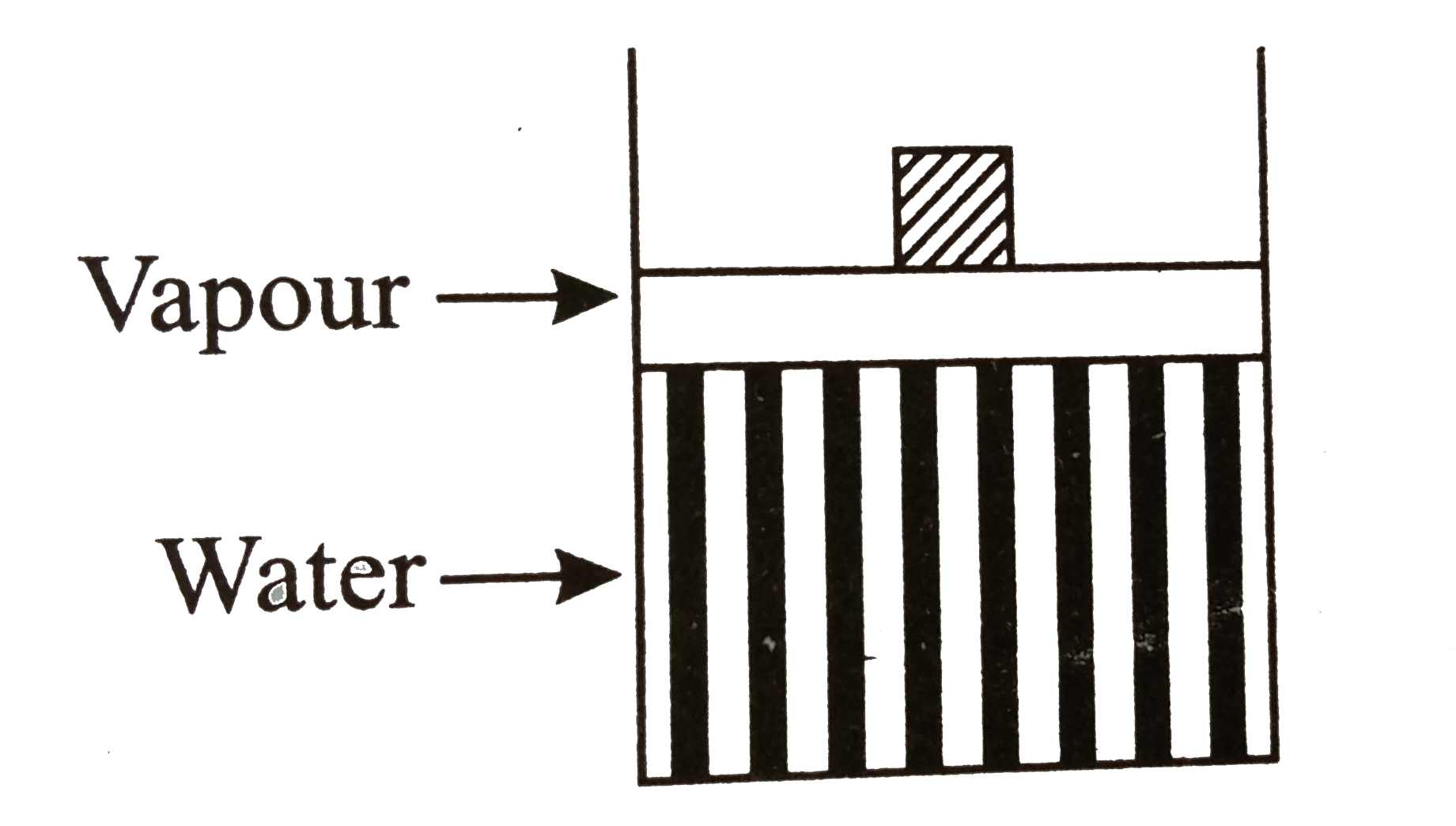A system containing some quantity of water in a thermos flask or in an insulated beaker. This would not allow exchange of heat between the system and surrouding through its boundary. This process is called as
isothermal process
adiabatic process
isochoric process
isobaric process
The correct Answer is:B
The sytem would not allow exchange of heat between the system and surroundings through its boundary. Hence, this types of system is called adiabatic system.
Topper's Solved these Questions
- CHEMICAL THERMODYNAMICS AND ENERGETICBook:MHTCET PREVIOUS YEAR PAPERS AND PRACTICE PAPERSChapter:CHEMICAL THERMODYNAMICS AND ENERGETICExercise:MHT CET Corner
Explore 40 Videos
- CHEMICAL THERMODYNAMICS AND ENERGETICBook:MHTCET PREVIOUS YEAR PAPERS AND PRACTICE PAPERSChapter:CHEMICAL THERMODYNAMICS AND ENERGETICExercise:Exercise 1
Explore 88 Videos
- CHEMICAL KINETICS Book:MHTCET PREVIOUS YEAR PAPERS AND PRACTICE PAPERSChapter:CHEMICAL KINETICS Exercise:MHT CET CORNER
Explore 20 Videos
- CHEMISTRY IN EVERYDAY LIFE Book:MHTCET PREVIOUS YEAR PAPERS AND PRACTICE PAPERSChapter:CHEMISTRY IN EVERYDAY LIFE Exercise:MHT CET CORNER
Explore 11 Videos
Similar Questions
In………………..process, no heat is exchanged between the system and the surroundings.
View SolutionA change in pressure and volume of a gas without any change in its temperature is called an isothermal change. In such a change there is free exchange of heat between the gas and its surroundings. Two essential conditions for a perfect isothermal change are :
(i) Walls of the container must be perfectly conducting
(ii)The process of compression or expansion must be slow.
Read the above passege and answer the following questions:
(i) A gas atmospheric pressure is compressed isthermally to one third of its volume. What is the final pressure?
(ii) What values of life do you learn from this study?
View Solution
Knowledge Check
Some quantity of water is contained in a container as shown in figure. As neon is added to this system at constant pressure, the amount of liquid water in the vessel
 AincreaseasBdecreasesCremains sameDchanges unparedictably
AincreaseasBdecreasesCremains sameDchanges unparedictablyAssetion : The temperature of a gas does not change when it undergoes on adiabatic process
Reason: During adiabatic process , heat energy is exchanged between a system and surroundings.AIf both assetion and reason are true and reaasons is the correct expanation of assetionBIf both assetion and reason are tur but reason is not the correct explanation of assetionCIf assertion is true but reason is falseDIf both assertion and reason are false.Assertion : During an adiabatic process, heat energy is not exchanged between system and its surroundings.
Reason : The temperature of a gas increases when it undergoes andn adiabatic expansion.AIf both the assertion and reason are true and reason is correct explanation of the assertion .BIf both the assertion and reason are true but reason is not a correct explanation of the assertion .CIf the assertion is true but the reason is false.DIf both assertion and reason are false.
When a thermos flask with some water in it is vigorously shaken. Does its temperature rise. Has some heat added to water during the process.
View SolutionDuring a process, the internal enegry of the system increases by 240kJ while the system performed 90kJ of work on its surroundings. How much heta was transferred between the system and the surroundings during this process. In which direction did the heat flow?
View SolutionClassify the following as open, closed, or isolated system.
a. A beaker containing as opne, boiling water.
b. A chemical recation taking place in an enclosed flask.
c. A cup of tea placed on a table.
d. Hot water placed in perfectly insulated closed container.
e. A thermos flask containing hot coffee.
View SolutionA sample of an ideal gas is allowed to expand at constant temperature against atmospheric pressure.
(a) Does the gas work on its surroundings?
(b) Is there a heat exchange between the system and surroundings?
View SolutionA process in which system comes to its initial state through a number of different processes is called _______.
View Solution
